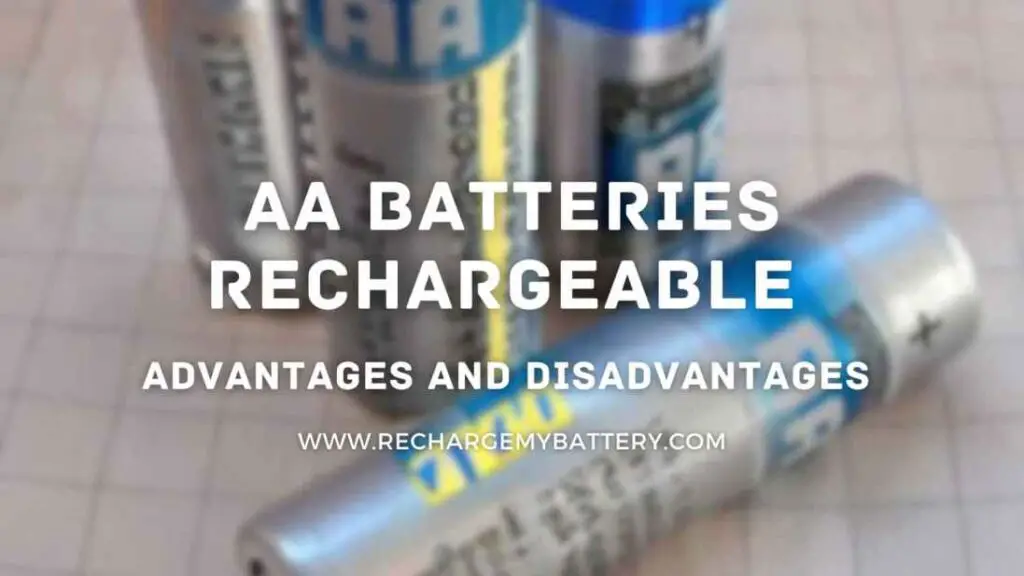Over time, the rechargeable batteries may lose their ability to hold a charge, leaving you with a seemingly dead battery. But fear not! In this article, we will explore effective methods to revive your rechargeable batteries and extend their lifespan.
Signs of a Dying Rechargeable Battery
The first step in bringing a rechargeable battery back to life is identifying whether it is truly dead or simply needs some reviving. Here are some signs that indicate a dying rechargeable battery:
- Reduced Run-Time: If your device’s battery life has significantly decreased compared to when it was new, it might be a sign of a dying battery.
- Slow Charging: If the battery takes an unusually long time to charge or doesn’t charge fully, it could indicate a problem.
- Battery Error Messages: Some devices display error messages or warnings when the battery is no longer performing optimally.
Battery Revival Methods
Now that you’ve identified that your rechargeable battery needs revival, let’s explore some effective methods to bring it back to life.
Deep Discharge and Recharge
One standard method to revive a rechargeable battery is through deep discharging. Here’s how you can do it:
- Completely drain the battery by using the device it powers until it shuts down.
- Let the battery rest for a few hours to ensure it is fully discharged.
- Recharge the battery using the appropriate charger for the recommended duration.
Deep discharging can sometimes recalibrate the battery and restore its capacity. However, be cautious not to deep discharge frequently, as it may reduce the overall lifespan of the battery.
Freezing Method
The freezing method is particularly useful for nickel-metal hydride (NiMH) batteries. Follow these steps:
- Place the battery in a sealable plastic bag.
- Put the bag in the freezer and leave it for 24 to 48 hours.
- Remove the battery from the freezer and let it return to room temperature.
- Recharge the battery using a suitable charger.
The freezing process helps break down crystal formations inside the battery, potentially reviving its performance. Remember to avoid exposing lithium-ion batteries to extreme temperatures as it can damage them.
Using a Battery Analyzer
Battery analyzers are devices that can diagnose and refresh rechargeable batteries. Follow these steps when using a battery analyzer:
- Connect the battery to the analyzer as per the device’s instructions.
- Run a diagnosis to assess the battery’s condition.
- If the analyzer offers a refresh or rejuvenation function, follow the recommended procedure to revive the battery.
Battery analyzers can provide valuable insights into the health of your rechargeable batteries and help identify issues that can be resolved.
Battery Reconditioning Chargers
Battery reconditioning chargers are specialized chargers designed to revive and extend the life of rechargeable batteries. Here’s how to use them:
- Connect the battery to the reconditioning charger.
- Follow the instructions provided by the charger manufacturer to initiate the reconditioning process.
- Allow the charger to complete the reconditioning cycle.
These chargers often utilize unique charging algorithms to restore the battery’s performance. They can be a useful investment if you frequently deal with rechargeable batteries.
Preventive Measures for Battery Longevity
While knowing how to revive a rechargeable battery is important, it’s equally crucial to take preventive measures to ensure its longevity. Here are some tips:
Avoid Overcharging
Overcharging can lead to premature aging and reduced capacity of rechargeable batteries. Always monitor the charging process and remove the battery from the charger once it’s fully charged.
Store Batteries Properly
When not in use, store rechargeable batteries in a cool and dry place. Avoid exposing them to extreme temperatures or direct sunlight, as it can degrade their performance.
Keep Batteries at Optimal Temperature
Rechargeable batteries operate best within a specific temperature range. Extreme heat or cold can impact their performance and lifespan. Keep them in a moderate environment whenever possible.
Recycling Old Batteries
If all revival attempts fail and you have a dead rechargeable battery on your hands, it’s essential to recycle it properly. Improper disposal of batteries can harm the environment. Many local recycling centers and electronic retailers offer battery recycling programs, ensuring they are disposed of safely and recycled to extract valuable materials.
Conclusion
Rechargeable batteries are a reliable and eco-friendly power source. However, over time, they may lose their capacity to hold a charge effectively. By understanding the signs of a dying battery and utilizing the appropriate revival methods, you can bring rechargeable batteries back to life and extend their lifespan. Remember to follow preventive measures and recycle old batteries responsibly for a greener future.
FAQs
Q1. Can all types of rechargeable batteries be revived?
Not all rechargeable batteries can be revived. The effectiveness of revival methods varies depending on the battery chemistry and the extent of the damage. It’s worth attempting revival techniques but be prepared to recycle the battery if revival is unsuccessful.
Q2. How often should I deep discharge my rechargeable batteries?
Deep discharging rechargeable batteries should be done sparingly, as it can reduce their overall lifespan. It is recommended to deep discharge them only when necessary or when you notice a significant decrease in their performance.
Q3. Can I use the freezing method on all types of rechargeable batteries?
The freezing method is most effective for nickel-metal hydride (NiMH) batteries. It helps break down crystal formations inside the battery that might be causing performance issues. However, it is not recommended for lithium-ion (Li-ion) batteries, as extreme temperatures can damage them. Always check the manufacturer’s recommendations before attempting the freezing method.
Q4. Are battery reconditioning chargers effective?
Yes, battery-reconditioning chargers can be effective in reviving rechargeable batteries. These chargers use specific algorithms to rejuvenate the battery and extend its lifespan. They are particularly useful for batteries that have undergone deep discharging or have been in storage for a long time.
Q5. What should I do with old batteries that cannot be revived?
It is important to recycle old batteries properly to prevent environmental damage. Many local recycling centers and electronic retailers offer battery recycling programs. They ensure that batteries are disposed of safely and recycled to extract valuable materials. Avoid throwing batteries in the regular trash, as they can contaminate the environment and pose a risk to human health.

